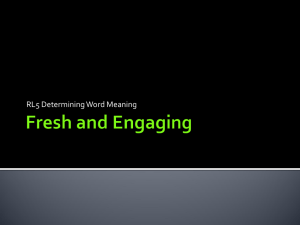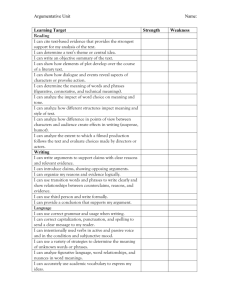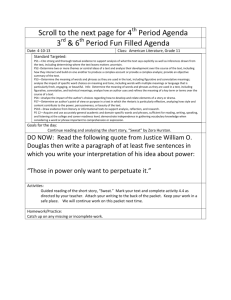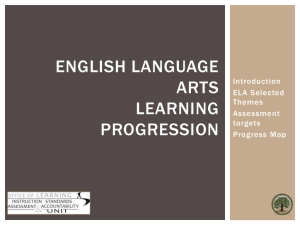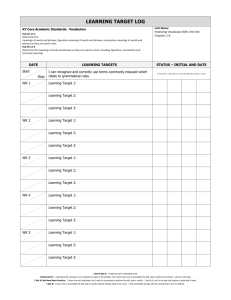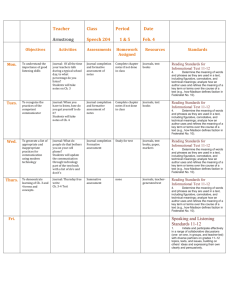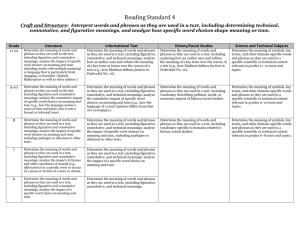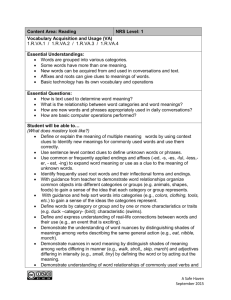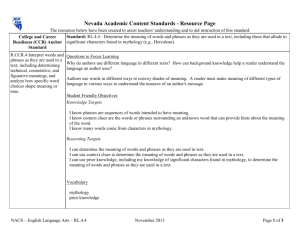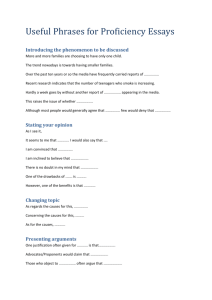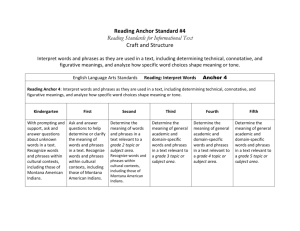Unwrapped Standards: RI.4.4 - Determine the meaning of
advertisement
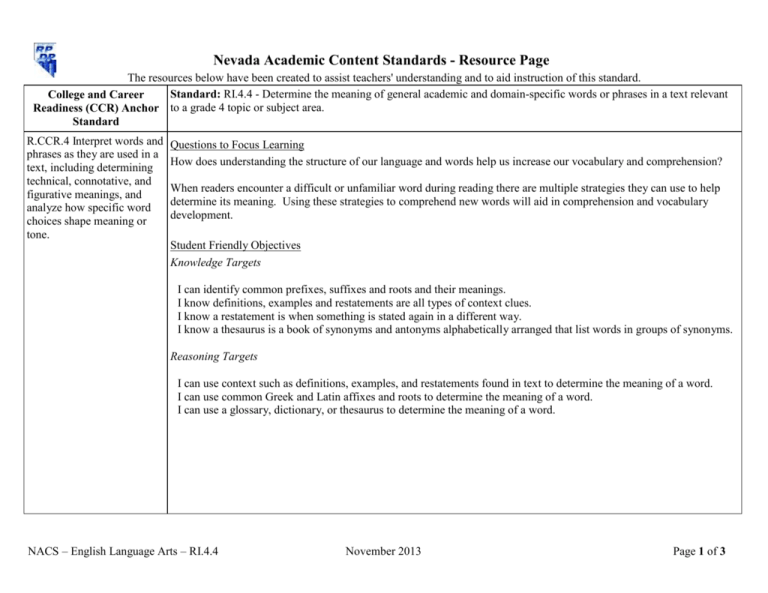
Nevada Academic Content Standards - Resource Page The resources below have been created to assist teachers' understanding and to aid instruction of this standard. Standard: RI.4.4 - Determine the meaning of general academic and domain-specific words or phrases in a text relevant College and Career Readiness (CCR) Anchor to a grade 4 topic or subject area. Standard R.CCR.4 Interpret words and phrases as they are used in a text, including determining technical, connotative, and figurative meanings, and analyze how specific word choices shape meaning or tone. Questions to Focus Learning How does understanding the structure of our language and words help us increase our vocabulary and comprehension? When readers encounter a difficult or unfamiliar word during reading there are multiple strategies they can use to help determine its meaning. Using these strategies to comprehend new words will aid in comprehension and vocabulary development. Student Friendly Objectives Knowledge Targets I can identify common prefixes, suffixes and roots and their meanings. I know definitions, examples and restatements are all types of context clues. I know a restatement is when something is stated again in a different way. I know a thesaurus is a book of synonyms and antonyms alphabetically arranged that list words in groups of synonyms. Reasoning Targets I can use context such as definitions, examples, and restatements found in text to determine the meaning of a word. I can use common Greek and Latin affixes and roots to determine the meaning of a word. I can use a glossary, dictionary, or thesaurus to determine the meaning of a word. NACS – English Language Arts – RI.4.4 November 2013 Page 1 of 3 Vocabulary affix connotation context clues definitions examples Greek affixes Greek roots Latin affixes Latin roots prefix restatements root suffix thesaurus tone Teacher Tips Anticipation Guide—Anticipation guides are used to determine students' prior knowledge and build curiosity about a topic. The anticipation guide could be modified to focus upon vocabulary encountered in the text being used. Context Clues—This website provides links to sites that provide instruction on determining the meaning of unknown words using contextual clues. Context Clues Slide Show—This website provides an overview of how to teach students to identify the six different types of context clues. Determining the Meaning of Unknown Words—This video lesson shows students how to use a glossary to determine the meaning of an unknown word. Frayer Model—Graphic organizer used for word analysis and vocabulary building Longman's Dictionary of Contemporary English Making Vocabulary Interactive—This video shows a middle school teacher using interactive strategies to teach vocabularies and analogies, but it could easily be altered to fit a fourth grade classroom. Marzano's Six Steps to Effective Vocabulary Instruction—This website showcases Robert Marzano's steps to effective academic vocabulary instruction. Online Dictionary Resources NACS – English Language Arts – RI.4.4 November 2013 Page 2 of 3 Vocabulary Instruction Webinar—Presenter: Shane Templeton This webinar explores the foundations of generative vocabulary instruction that underlies native-speaking and Englishlearning students' reading and writing across all subject matter domains in grades 4-8. Shane Templeton will address research-based strategies for: •Teaching basic academic vocabulary •Selecting and teaching individual words and concepts for deep understanding •Teaching the process of how Greek and Latin word parts combine so that students generalize this understanding to the analysis and acquisition of new vocabulary in their reading and learning in all content areas Words and Phrases Concept Map—Graphic organizer that shows the relationships between words and phrases Vertical Progression RI.K.4 - With prompting and support, ask and answer questions about unknown words in a text. RI.1.4 - Ask and answer questions to help determine or clarify the meaning of words and phrases in a text. RI.2.4 - Determine the meaning of words and phrases in a text relevant to a grade 2 topic or subject area. RI.3.4 - Determine the meaning of general academic and domain-specific words and phrases in a text relevant to a grade 3 topic or subject area. RI.5.4 - Determine the meaning of general academic and domain-specific words and phrases in a text relevant to a grade 5 topic or subject area. RI.6.4 - Determine the meaning of words and phrases as they are used in a text, including figurative, connotative, and technical meanings. RI.7.4 - Determine the meaning of words and phrases as they are used in a text, including figurative, connotative, and technical meanings; analyze the impact of a specific word choice on meaning and tone. RI.8.4 - Determine the meaning of words and phrases as they are used in a text, including figurative, connotative, and technical meanings; analyze the impact of specific word choices on meaning and tone, including analogies or allusions to other texts. RI.9-10.4 - Determine the meaning of words and phrases as they are used in a text, including figurative, connotative, and technical meanings; analyze the cumulative impact of specific word choices on meaning and tone (e.g., how the language of a court opinion differs from that of a newspaper). RI.11-12.4 - Determine the meaning of words and phrases as they are used in a text, including figurative, connotative, and technical meanings; analyze how an author uses and refines the meaning of a key term or terms over the course of a text (e.g., how Madison defines faction in Federalist No.10). The above information and more can be accessed for free on the Wiki-Teacher website. Direct link for this standard: RI.4.4 NACS – English Language Arts – RI.4.4 November 2013 Page 3 of 3
